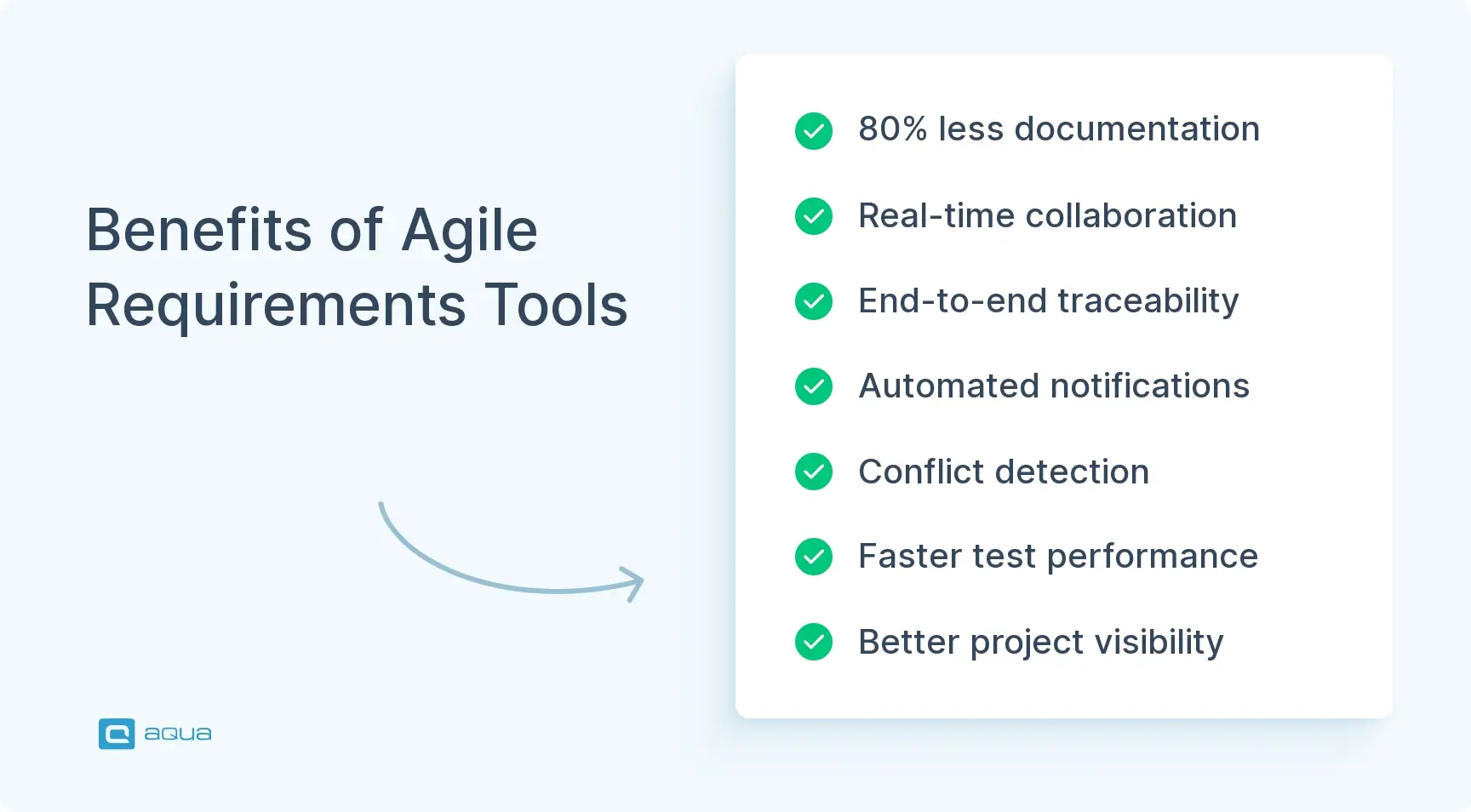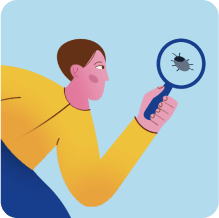Key takeaways
- Agile requirements management treats requirements as working hypotheses. Teams refine them through regular collaboration, not fixed documents created before development starts.
- Agile projects succeed 2-3 times more often than traditional waterfall projects, according to industry-trusted researchers.
- The Agile requirements lifecycle runs continuously. It includes product discovery, backlog refinement, implementation, validation, and adaptation.
- Organizations in regulated industries like healthcare and automotive need tools that prioritize compliance while maintaining agility.
- Progressive elaboration is a core practice. Teams maintain a multi-level backlog (epics, features, stories) and add details just before implementation.
Do you find that maintaining balance between flexibility and structure in your requirements process is complicated? Agile requirements management means continuous refinement with a strong focus on delivering customer value. Here are the tools and techniques that can change your approach 👇
What is Requirements Management in Agile?
Agile requirements management is the methodology that provides guidance on handling requirements throughout the iterative software development cycle.
Requirements management in agile accepts that user needs change as they interact with the software. Agile teams build processes that allow for change instead of resisting it. They create small chunks of functionality that deliver immediate value. Then they gather feedback and iterate. This approach recognizes that perfect requirements don’t exist at the start of a project. They emerge through discovery and experimentation.
The Agile approach is different from traditional requirements management. As such, in agile work, requirements are lightweight, flexible artifacts. They get improved through regular collaboration between your developers, product owners, and stakeholders. That notably contrasts with the traditional approach, which demands from you to fully lock requirements down before development starts.
| Traditional Requirements Management | Agile Requirements Management |
|---|---|
| Comprehensive upfront documentation | Progressive elaboration with just-in-time details |
| Change requests through formal control boards | Continuous refinement and reprioritization |
| Sign-off gates and approval cycles | Ongoing collaboration and shared understanding |
| Requirements “handed off” to development | Cross-functional teams jointly refine requirements |
| Large requirements documents (BRDs, MRDs) | User stories with acceptance criteria and examples |
| Documentation-heavy traceability matrices | Automated, tool-supported traceability |
| Fixed scope, variable quality | Fixed quality, variable scope |
| Validation at project end | Continuous validation through working software |
When working with Agile methodology, your team can prioritize conversations over documentation, working software over complete specs, and customer collaboration over contract negotiation. That doesn’t mean documentation disappears. It just becomes leaner and more focused on what’s needed right now.
Agile Requirements Management Lifecycle
The Agile requirements management process runs continuously rather than linearly. You need to understand this cycle better to stay flexible while keeping requirements aligned.
The Agile requirements management lifecycle spans across these key stages:
- Product discovery: Finding problems worth solving and framing them as measurable outcomes
- Backlog creation: Capturing initial requirements as epics and features
- Story mapping: Organizing requirements into user journeys to visualize the product
- Backlog refinement: Breaking down requirements, adding details just before implementation
- Sprint planning: Selecting refined requirements for the upcoming iteration
- Implementation: Building the requirements into working software
- Validation: Testing against acceptance criteria and collecting feedback
- Adaptation: Adjusting requirements based on feedback and new insights
- Change management: Handling requirement changes through reprioritization
This cycle repeats continuously. Each iteration gives your team new information that shapes future requirements. The process creates a feedback loop where working software informs what comes next.
In Agile, teams capture high-level requirements as epics or features on a product backlog. This backlog becomes the single source of truth for all requirements. As the team gets closer to implementation, they refine these high-level items into smaller, more detailed user stories. This iterative process includes:
- Slicing large requirements into independent, valuable pieces
- Adding acceptance criteria to clarify expectations
- Creating examples that illustrate desired behavior
- Attaching non-functional requirements like performance and security
When dealing with agile requirements management, your team may find it difficult to balance between flexibility and structure. The right tech stack is the solution. This is where aqua cloud, an AI-powered requirement and test management platform, stands out as a solution specifically for agile teams. Unlike software that simply digitizes index cards, aqua provides end-to-end traceability between requirements and defects. With aqua’s centralized repository, your team can collaborate in real-time on requirements as well as maintain version history with complete audit trails. What truly sets aqua apart is its domain-trained AI Copilot that can generate high-quality test cases directly from your documentation, text, or even voice notes, saving approximately 12.8 hours per tester per week. aqua has out-of-the-box integrations with Jira, Jenkins, Selenium, a suite of other tools, and support for REST API for custom integrations.
Boost your requirements management and save up to 97% of documentation time.
Benefits of Agile Requirements Management Tools

The 17th State of Agile survey shows that agile projects succeed 2-3 times more often than traditional waterfall projects. When approached correctly, Agile requirements management can drive success. Let’s focus on several main business benefits you may reap after implementing this methodology:
Better collaboration
Modern agile tools create a shared space where product owners, developers, testers, and stakeholders can discuss requirements in real-time. This reduces misunderstandings and removes the delays. For example, when Sonova, a medical device manufacturer, started using an agile requirements management tool, they reported an 80% reduction in documentation time. Everyone could collaborate directly on requirements rather than emailing documents back and forth.
End-to-end traceability
Agile requirements management tools automatically link requirements to related artifacts like test cases, code changes, and defects. This traceability serves multiple purposes: it can help your team understand the impact of changes and show compliance in regulated environments, as well as provide visibility into project progress. Nevertheless, the approach still meets strict ISO compliance standards.
Increased efficiency
Agile requirements tools also increase efficiency by automating routine tasks. They can:
- Notify stakeholders when requirements change
- Flag potential duplicates or conflicts
- Generate reports on requirement coverage and status
- Provide analytics on backlog health and velocity
As a quick example, for energy metering company BRUNATA Wärmemesser Hagen GmbH & Co. KG, aqua cloud boosted testing performance by 50%. The platform replaced fragmented Excel spreadsheets and disconnected JIRA workflows with a unified solution. This reduced manual effort while ensuring audit-ready documentation for their SAP projects.
Beyond these operational benefits, good agile tools provide better visibility into the entire requirements view. Due to that, your team can better forecast delivery dates, understand dependencies, and make informed prioritization decisions. This visibility also extends to your stakeholders, who gain confidence through transparent access to the project’s current state and direction.
Requirements Traceability is essential in a Waterfall world and if they are transitioning to Agile, they may not realise that they need to scale back on this as it is handled tacitly in the stories. The huge requirements monolith can be hard to walk away from as it can be used as a security blanket for many things.
Key Tools for Agile Requirements Management
Selecting the right tools for agile requirements management can affect your team’s effectiveness in major ways. The market offers various options tailored to different team sizes, project complexities, and regulatory needs. If you understand their capabilities well, you can make an informed choice of the best requirements engineering and management tool that supports your agile practices.
Lightweight tools often provide the right balance of flexibility and structure for software product teams working in non-regulated environments. Here, Jira remains one of the most popular options, especially when paired with Jira Product Discovery for upstream requirements. Its strength lies in how you can extend it. This way, you can start simple and add plugins for more advanced requirements management as needed. Many teams combine Jira with dedicated test management and requirement management tools like aqua cloud, for extended functionalities.
Organizations in regulated industries like healthcare, automotive, or aerospace need solutions that support compliance while maintaining agility. Options like aqua cloud, Jama Connect, IBM DOORS Next, and Siemens Polarion provide versioning, baselining, and formal reviews while still supporting agile workflows. These tools also emphasize traceability required for FDA, ISO, or other regulatory standards.
If you seek an all-in-one solution that combines Agile flexibility and enterprise-grade requirements management, aqua cloud, a test management and a requirement management platform, is an optimal choice. Unlike tools that excel in just one area, aqua delivers end-to-end capabilities spanning requirements, test management, and defect tracking in a unified environment. The platform supports hierarchical requirement organization from epics down to user stories. Besides, it maintains automated traceability across all artifacts, and provides compliance-ready audit trails for regulated industries. What distinguishes aqua is its AI Copilot that generates detailed test cases and requirements from brief descriptions, text, or voice input. With 12 out-of-the-box integrations, including Jira, Jenkins, Selenium, and Confluence aqua integrates into existing toolchains well. Teams using aqua report saving approximately 12.8 hours per tester per week while maintaining full regulatory compliance.
Achieve 80% better test and requirement management with aqua cloud
Here’s a summary of some notable Agile project requirements management tools:
| Tool Type | Popular Options | Best For | Key Features |
|---|---|---|---|
| Lightweight Agile | Jira + Confluence, Azure Boards, GitLab | Software teams, startups | User stories, sprints, backlog management |
| All-in-One Agile | aqua cloud | Teams needing integrated requirements, testing, and compliance | AI-powered generation, end-to-end traceability, regulatory support |
| Enterprise ALM | Jama Connect, Modern Requirements4DevOps, Helix ALM | Large organizations, multiple teams | Cross-team visibility, portfolio management |
| Regulatory-Focused | Siemens Polarion, IBM DOORS Next, codebeamer | Medical, automotive, aerospace | Compliance documentation, audit trails, formal reviews |
| BDD/ATDD | Cucumber, SpecFlow, Behave | Teams using specification by example | Executable requirements, living documentation |
You can observe that the most effective tools often share certain capabilities regardless of their target market:
- Hierarchical organization (epics → features → stories)
- Rich text and visual requirements (diagrams, mock-ups)
- Automated traceability to tests and code
- Version control and history tracking
- Collaboration features (comments, notifications)
- Integration with development and testing tools
When evaluating tools, consider your team’s specific context. A small startup might need simplicity and speed above all, while a medical device team requires rigorous verification capabilities. The right tool should support your agile practices rather than forcing you to adapt to the tool.
Best Practices for Effective Agile Requirements Management
With Agile management, simple procedure implementation is not enough. For optimal results, you need to adopt agile requirements management best practices that would balance agile’s emphasis on flexibility with the need for clarity and shared understanding.
Above everything, writing high-quality requirements is foundational. Even in agile, which is more flexible compared to traditional methods, the written artifacts are nevertheless important. That’s why you should focus on making each requirement clear, testable, and valuable. Here are some tips and tricks to consider using:
- Use a consistent style guide that removes ambiguity
- Avoid vague terms like “fast,” “user-friendly,” or “etc.” that mean different things to different people
- Write specific, measurable criteria instead: “The search function must return results in under 300ms for queries with up to 10 terms.”
- Use AI-powered tools to analyze requirements for quality issues
- Flag vague language and suggest improvements using these tools
Progressive elaboration is another core practice. Don’t try to detail everything upfront. Instead, maintain a multi-level backlog where items get elaborated just-in-time as they approach implementation:
- Epics: Minimal detail, focus on business outcomes and user needs
- Features: Medium detail, describing capabilities and constraints
- Stories: Full detail with acceptance criteria, ready for development
This approach prevents wasted effort on features that might change or be deprioritized before implementation.
Visual models often communicate requirements better than text alone. Use diagrams, wireframes, and prototypes to illustrate complex interactions or system behaviors. These visuals become powerful collaboration tools as they allow your team to identify gaps or inconsistencies that might be missed in written descriptions.
Stakeholder collaboration must be continuous, not just at the beginning and end. Involve stakeholders in backlog refinement sessions, sprint reviews, and ad-hoc discussions about requirements. Use techniques like story mapping workshops to build shared understanding of user journeys and product capabilities.
Here’s a list of key practical tips for improving your requirements management:
- Include non-functional requirements with every feature (performance, security, accessibility).
- Write acceptance criteria using the Given/When/Then format for clarity.
- Maintain a glossary of domain terms to ensure consistent understanding.
- Schedule regular backlog grooming sessions to keep requirements fresh.
- Automate traceability between requirements and tests to ensure coverage.
- Implement “definition of ready” standards before stories enter development.
Following these practices creates a beneficial cycle where better requirements lead to less rework and higher quality outcomes.
Regardless of the tool, it's fundamental to keep in mind that good portion (most?) of requirements and testing happens in people's heads, never to be documented (tacit knowledge). Falling into the trap that what is documented there is all that exist for quality may lead to bad decisions/analysis.
As you implement the agile requirements management practices, consider aqua cloud as your software provider. The platform delivers everything needed for modern requirements management. This includes hierarchical organization of epics, features, and stories. The platform’s AI Copilot helps teams generate detailed test cases from high-level requirements with just a click. What makes this AI special is that it’s domain-trained and uses RAG grounding to make every suggestion deeply relevant to your specific project context. For teams working in regulated environments, aqua provides the lightweight baselines, version control, and audit trails needed for compliance. With integrations to Jira and Azure DevOps, aqua creates a smooth software ecosystem. Teams using aqua report up to 42% of AI-generated test cases that require no editing.
Achieve 100% requirements coverage with agile-friendly tools that integrate AI, traceability, and team collaboration
Conclusion
Agile requirements management is a meaningful change in product development. It focuses on continuous discovery and collaboration rather than rigid upfront planning. Through Agile principles and the best practices you’ve just explored, your team can improve its ability to deliver valuable products. The right software tools support this procedure. They provide the structure and traceability needed, without giving up flexibility. Whether you work in a startup or a regulated enterprise, effective requirements management is equally important for successful agile implementation. Remember that Agile means working on requirements continuously throughout the development cycle.

















